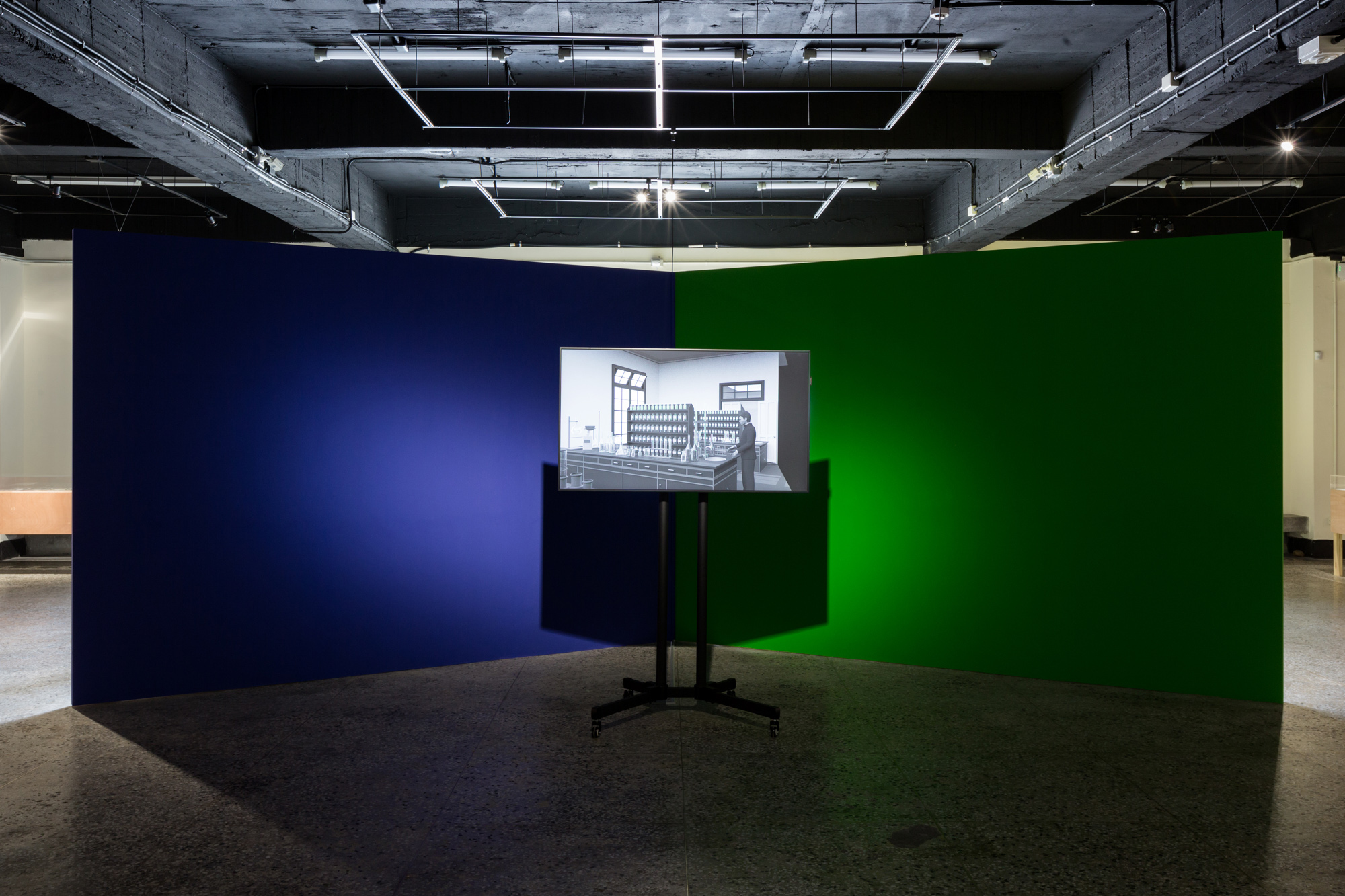「科學」和「藝術」似乎用盡全力地想要與對方沾上邊――這是我們回顧過去幾十年的歷史,會發現的一個奇特現象:在藝術領域裡,我們早已習以為常,藝術家將自己的「創作」標榜為一種「研究活動」,或是直接在作品中複製、挪用、擬仿自然科學的實驗方法;而在另一方面,我們早已見怪不怪,科學家定期公開在實驗過程中製造出來的圖像,並讚嘆它們如同「藝術作品」般美麗。雖然這中間顯然存在著某些「美麗」的誤會(在當代藝術論述中,「美不美麗」可能是論斷藝術作品最末端且最無足輕重的標準),但不可否認的是,在今天,「科學」與「藝術」的關係不僅是藝術史與科學史研究中的重要議題,它們的「整合」更是文化政策上的首要目標。
在這個脈絡之下,「實驗」,這個事實上來自科學領域的詞彙,成為當代藝術中的關鍵字。它不但成為了「藝術創作」的同義詞,在許多展覽中,「實驗」更被用作支撐整個展覽論述的重要概念。然而,在這邊,我們必須去問的是,為什麼「實驗」在今天能如此廣泛且理所當然地被拿來指稱「藝術實踐」?而「實驗」究竟意味著什麼?
這些問題並不容易回答。但我們可以先把「實驗」放回科學史的脈絡中來檢視它。
先來談「實驗」這個字。「實驗」(experiment)源自於拉丁文中的「experīmentum」,意味著「試驗」、「檢證」、「經驗」。作為動詞使用時,「實驗」代表著「將東西轉化成經驗」。從這個角度看來,「實驗」後來在自然科學中的定義其實沒有太大的改變:「實驗」意味著一套「檢驗一個假設是否為真」的方法。此中通常會有一個事先預設好的提問,而所謂的「實驗」即是在一個精心設計的系統中,透過一連串嚴謹的程序將這個提問具體化、物質化,並讓這個提問得以在實際的操作中反覆被測試、驗證的過程。在實驗中,一個假設或許會被證實,或許會被推翻。但不管結果如何,「實驗」的目的總在讓抽象的假設回歸到具體的經驗中被檢視,並讓實驗的結果可以歸納出一套法則甚或是理論。
回顧科學史,我們會發現,即便許多哲學家與科學家,譬如培根(Francis Bacon)、牛頓(Isaac Newton)早在17世紀就開始強調「實驗」的重要性,但在他們的觀點下,實驗充其量只是單純用來「檢驗理論」的輔助工具。
事實上,一直要到1980年代,「實驗」才重新受到哲學家與歷史學者的重視。而這個轉變,與「實驗」在現代科學中所扮演的角色有很大的關聯:人們開始意識到,許多科學中的「研究對象」是透過「實驗」才得以存在,而且是在「實驗」中才能成為可被感知的「現象」。換句話說,「實驗」不再僅僅負責檢驗一個事前「已知」的假設。在許多狀況下,「實驗」更創造、建構出了一個我們原本「未知」的世界。
當然,這個對「實驗」的關注激起了一連串討論:如果在實驗中觀察到的「現象」根本不存在於實驗室以外的世界的話,我們還可以把它視為是真實世界的「再現」嗎?我們在實驗中觀察的對象究竟是「人造物」還是「自然物」?
從20世紀末以來,「實驗」成為了知識史、社會學、圖像史、文化研究等學科中重要的研究對象。學者開始研究,知識是如何在技術、儀器、研究人員、機構交織出來的龐大網絡中生產出來的?而這個轉變也讓學者開始去反省傳統以來我們對於「科學」的想像。
 許家維,《臺灣總督府工業研究所》,2017,單頻道錄影裝置,片長3分鐘。圖/呂國瑋攝影
許家維,《臺灣總督府工業研究所》,2017,單頻道錄影裝置,片長3分鐘。圖/呂國瑋攝影
我們通常會認為「科學」的任務在於「解釋」。「科學」必須「精確」,且能夠使我們更加「理解」我們身處的世界。不過,正如德國科學史學者萊恩貝格爾(Hans-Jörg Rheinberger)指出的,對於一個科學研究來說,最大的難題就是,科學家「不知道自己不知道的東西是什麼」。這個說法雖然乍聽之下有點多餘,但其實不難理解,因為沒有一個科學研究最終目的只是要去發現「已知的東西」。科學從來不知道自己該走向哪裡,而往往是在沒有明確目標的狀態下往前推進的。正因為如此,知名的科學史學者孔恩(Thomas Kuhn)才會將科學研究描述成「一個從背後驅使的過程」(a process driven from behind)。這邊的問題是,如果我們不知道我們要找的東西是什麼的話,那我們要怎樣趨近它?我們要怎樣知道,我們能與那個「未知的東西」相遇?
萊恩貝格爾提醒我們,正因為不知道,所以科學家在設計實驗系統的時候,總會保留一些模糊、主觀或是仍未明確規範的空間。當然,這並不意味著,科學家可以草率行事。他的意思是,所有的實驗都必須在「確定」與「不確定」、「已知」與「未知」、「熟悉」與「陌生」的邊界上,將自身開放、並轉化成一個讓「未知之物」得以顯現的場域。雖然不知道它是什麼,甚至無法預期它究竟會不會到來,但對於科學家而言,所有「實驗」都必須保持一定的開放性。一個過於封閉、嚴謹、精確的實驗系統只會窒死未知事物出現的可能。
在歷史上確實是如此。雖然在期刊論文中,科學家通常會將「新發現」呈現作實驗最初就早已經確立的目標。不過,科學史學者告訴我們,所謂的「新發現」通常都是「事後之明」。許多自然科學中的「新發現」,像是「X光」和「盤尼西林」,都必須仰賴在實驗中發生的「意外」才得以被意識到。事實上大部分科學家的遭遇和哥倫布很類似――他最初的目的地是東印度群島,而他也確信自己航行在正確的航道上,但最後發現的卻是「新大陸」。
如果我們把科學研究的過程繪製成一張地圖,我們會發現,從來沒有一個研究是直線通達它的終點的。在研究的過程中永遠充滿了支線、彎道、岔路、死巷和突如其來的偏移與轉向。而且,我們往往事後才會知道,那些在實驗中被視作「干擾」、「汙染」、「瑕疵」、「錯誤」的東西其實在研究中扮演了最關鍵的角色。
哲學家維根斯坦(Ludwig Wittgenstein)曾寫道:「我們需要的,不常常正是模糊的圖像?」(Ist das unscharfe Bild nicht oft gerade das, was wir brauchen?)在他的語言哲學中,維根斯坦認為,一個「精確」的語言不僅沒有能動性,更無法真正被使用。當我們使用「語言」時,我們永遠遊走在「精確」與「模糊」的邊界,並創造出了一個「遊戲性」的空間。
當科學家在「實驗」的時候,基本上也是如此。他必須遠離「已知」的中心,向外走去,並且嘗試在「已知」的盡頭,找到進入「未知」的入口。他雖然希望一個實驗可以不斷生產出同樣的結果(「可重複性」是一個假設是否成立的基本要件),但在一個「實驗系統」中,他也同時希冀在反覆推敲、無限循環的單調過程中,看見閃現的「差異」。他身處的世界並非真空式的封閉,也非全敞式的開放。他享受的自由並非「無政府主義式」的自由,遭受的限制也非「箝制式」的限制。
對他來說,「可能性」不會只是一種空泛的修辭。他在他不知道的東西面前遲疑。他不知道他不知道的東西。
或許我們可以說,這就是一種「實驗」的態度,而正是這樣的態度讓「科學家」和「藝術家」顯得如此相似:他們都在黑暗中摸索地前進,並且願意忍受一定程度的不確定與曖昧性。他們不排斥意外,而且樂意將自己暴露在失敗的危險之中。另外,在他們眼中,所有的「盡頭」都不過是尚未跨越的「邊界」而已。